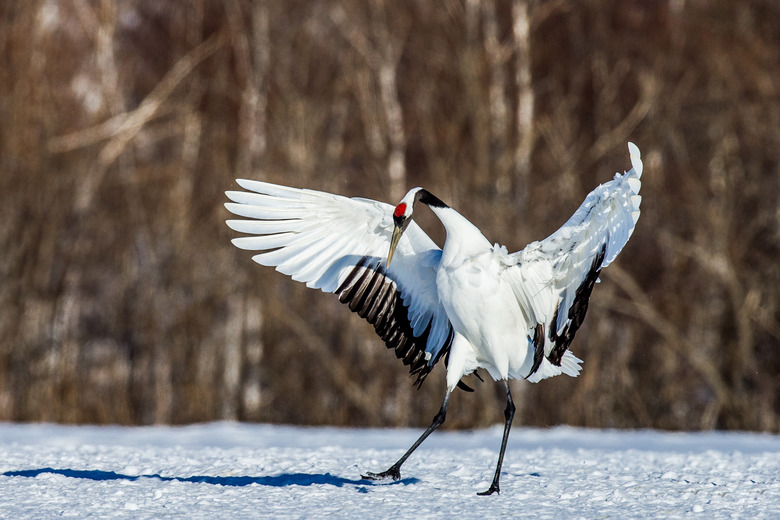The Endangered Animals Of Deciduous Forest Biomes
The deciduous forest — a biome known for warm summers, cold winters and seasonal foliage — stretches throughout northern Europe and across the East Coasts of the United States and China. Deciduous forests are one of the most heavily-populated biomes on Earth, and the development and expansion of human presence in the forests has caused many of their native species to become endangered.
Giant Panda
Giant Panda
The giant panda, Ailuropoda melanoleuca, is one of the most recognizable endangered species on Earth. The panda is a large, predominantly docile species of bear native to the deciduous forest of eastern China, Myanmar and Vietnam. Because of its limited diet — the panda's main source of food is bamboo — the species is limited in its habitat to areas where bamboo is available. Over time, encroaching human populations have pushed back the habitable environment for the panda, and the species only can be found today in 20 small patches of forest at the western edge of its historic range. Measures have been taken by the Chinese government and zoos worldwide to prevent further destruction of the panda's habitat and to help promote breeding and genetic diversity in the species.
Gray and Red Wolves
Gray and Red Wolves
Wolves, once one of the widest-ranging predators in the deciduous forest, have now virtually disappeared from Europe, and have highly reduced ranges in North America. The gray wolf, Canis lupis, which once ranged from the East Coast of America to the West, and south to Mexico, now has a population of only 5,000 in the lower 48 states, mostly in the Rocky Mountains. Conservationists have made efforts to preserve the gray wolf's habitat in the United States by protecting open ranges where wolves are able to move freely and hunt. The smaller red wolf, Canis rufus, native to the southeastern United States, was declared extinct in the wild in 1980, though conservation efforts have reintroduced small captive populations to the wild in California.
Red-Crowned Crane
Red-Crowned Crane
Grus japonensis, the red-crowned crane, is a 5-foot-tall bird with an 8-foot wingspan, named for the red feathers at the top of its head. The crane is native to Japan, Korea and eastern China. Agricultural expansion and deforestation in these areas have removed a great deal of the marshes and forests that are the crane's primary habitats. For a time, the crane was thought to have completely disappeared from Japan, but the recent discovery of cranes in Japanese marshlands has reignited conservation efforts. Today, around 2,500 cranes live in the wild, including 1,000 in Japan.
European Mink
European Mink
The European mink, Mustela lutreola, is a small carnivorous mammal related to the weasel. Native to Europe, it ranges from France in the west to Finland in the north, Russia in the east and the Balkans in the south. Destruction of the mink's aquatic habitat and use of the species for fur have caused dramatic drops in the species's population, which has been reduced by 85 percent since the mid-19th century. The encroachment of the American mink species has also contributed to the European mink's decline. The mink is now currently extinct in much of Eastern Europe, and dramatically reduced in population in Russia, France and Spain, with just a few hundred individuals being reported in the latter two cases.
Cite This Article
MLA
Zamboni, Jon. "The Endangered Animals Of Deciduous Forest Biomes" sciencing.com, https://www.sciencing.com/endangered-animals-deciduous-forest-biomes-8004536/. 23 April 2018.
APA
Zamboni, Jon. (2018, April 23). The Endangered Animals Of Deciduous Forest Biomes. sciencing.com. Retrieved from https://www.sciencing.com/endangered-animals-deciduous-forest-biomes-8004536/
Chicago
Zamboni, Jon. The Endangered Animals Of Deciduous Forest Biomes last modified March 24, 2022. https://www.sciencing.com/endangered-animals-deciduous-forest-biomes-8004536/
